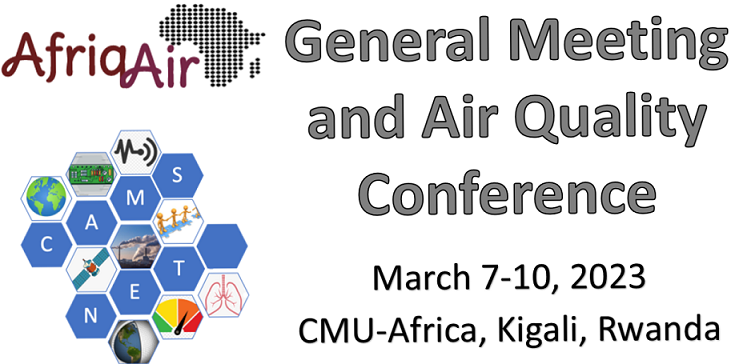Speaker
Description
Introduction
Particulate matter (PM2.5) is known to have adverse health effects
on human health and to impact on climate. For human health
concerns the type of involved measuring instruments are expensive
and in the low- and middle- income countries (LMICs), they are
very few thus inhibiting implementation of dedicated studies. Well
calibrated OPCs can offer indicative PM2.5 data that can be used in
modelling ground concentrations and reverse the perennial paucity
of data in LMICs. This report is from a short study carried out in
Nairobi, Kenya, using AlphaSense optical counters (OPC-N2).
Methodology
Five OPC-N2 were collocated with a BAM-1020 at the top of the
Engineering Building, University of Nairobi, about 20 m above
ground level. They were placed a few feet from each other to ensure
free flow of air (Pope et al., 2018). Simultaneous measurements
were carried out for one month (September 2021) and weather data
was retrieved from an AlO 2 Sonic weather sensor at the same site.
The data from the OPCs was compared with the BAM data by
employing two linear regression models and three machine learning
techniques.
Results
Generally, similar patterns of concentrations were observed (Fig. 1).
However, the OPCs data was much lower than the BAM data,
highlighting the inferior measurement technique in OPCs.
The plots suggest the existence of two profiles one at low humidity
and the other at high humidity (Fig. 2). At high relative humidity the
lower concentrations of PM2.5 from the OPCs correlate more with
the higher concentrations from the BAM (Crilley et al., 2018).
Table 1: Performance of different models used to calibrate
Alphasense OPC-N2s
The best performing models for most OPCs were the machine
learning techniques with the kNN model showing the highest R2
value and lowest MAE and RMSE for three of the sensors (see Table
1). Different calibration models were developed for each of the OPC
as opposed to an average approach or using one model for all
(Báthory et al., 2022; Magi et al., 2020).
Conclusion and Recommendations
The multilinear regression, the random forest, k nearest neighbor
and the gradient boost models account for the influence of
meteorological conditions on the PM2.5 measurements and result in
better agreement between sensor and reference grade monitors than
simple linear regression model.
Future studies should use a longer calibration period that covers all
seasons to improve understanding the influence of meteorological
variables on OPCs. Although this is well documented in literature
machine learning modelling approach has not been used for
calibration in Nairobi.
Calibrated OPCs will help in mining particulate data where it is
scanty or does not exist.
References
Crilley et al. (2018). J. Atmospheric Measurement Techniques, 709-
720.
Pope et al. (2018). J. Atmospheric Chemistry and Physics, 18(20),
15403-15418.
Báthory, C., Dobó, Z., Garami, A., Palotás, Á., & Tóth, P. (2022).
Journal of Environmental Management, 304, 114158.
Magi, B. I., Cupini, C., Francis, J., Green, M., & Hauser, C.
(2020). Aerosol Science and Technology, 54(2), 147–159.

